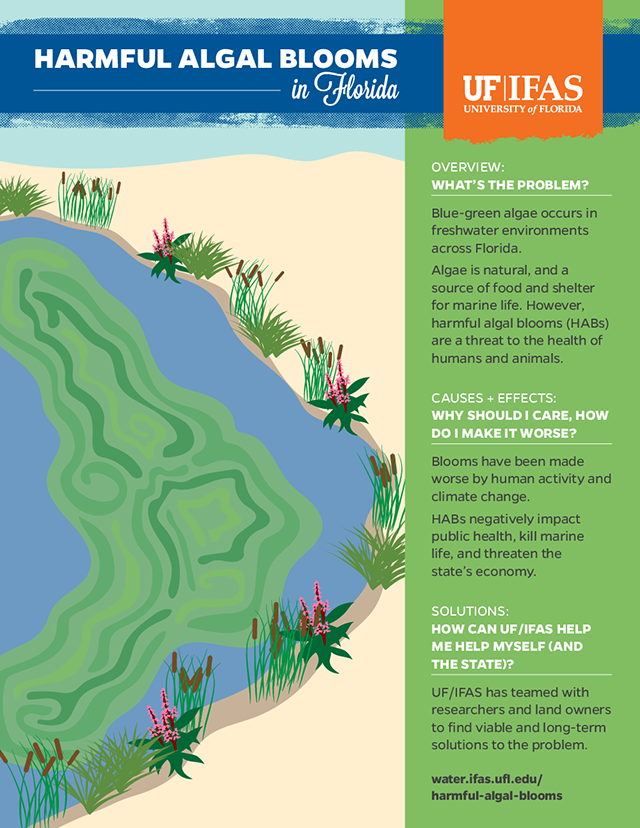Harmful Algal Bloom Crisis: Assessing The Damage On California's Coast

Table of Contents
Economic Impacts of Harmful Algal Blooms in California
The economic consequences of HABs in California are far-reaching and severe, affecting multiple industries and communities. The costs associated with HABs extend beyond immediate losses, creating a ripple effect throughout the state's economy.
Fisheries and Aquaculture
HABs wreak havoc on California's fisheries and aquaculture industry. Shellfish harvesting closures, a common response to toxic blooms, lead to significant economic losses for fishermen and aquaculture businesses. For example, closures impacting the lucrative Dungeness crab fishery have resulted in millions of dollars in lost revenue for fishing communities. Other species affected include various shellfish (oysters, mussels, clams) and finfish, impacting the entire seafood supply chain, from harvesting and processing to restaurants and seafood markets.
- Lost Revenue: Millions of dollars in lost revenue annually due to shellfish harvesting closures.
- Job Losses: Impacts on fishing jobs and related industries (processing, distribution).
- Reduced Seafood Supply: Disruption to the seafood market and increased prices for consumers.
Tourism and Recreation
California's coastal tourism is a major economic driver, but HABs threaten this vital industry. Beach closures due to toxic blooms deter tourists, impacting hotel occupancy, restaurant revenue, and businesses that rely on recreational activities such as swimming, surfing, and boating. The negative publicity associated with HABs can also discourage future tourism.
- Beach Closures: Significant reduction in tourism revenue due to beach closures and warnings.
- Negative Publicity: Damaged reputation of California's coastline as a tourism destination.
- Reduced Recreational Activities: Loss of income for businesses dependent on water-based recreation.
Water Treatment Costs
HABs contaminate drinking water sources, requiring increased treatment costs to remove toxins and ensure public safety. Water treatment plants incur significant expenses in upgrading filtration systems and implementing additional treatment processes to neutralize harmful algal toxins. These added costs are ultimately borne by taxpayers and can lead to potential increases in water bills.
- Increased Filtration Costs: Upgraded water treatment facilities and increased operational expenses.
- Potential Health Care Costs: Costs associated with treating illnesses caused by contaminated water.
- Economic Burden on Water Agencies: Increased financial strain on municipalities and water districts.
Environmental Consequences of Harmful Algal Blooms along the California Coast
Beyond economic impacts, HABs inflict severe ecological damage on California's marine environment, disrupting delicate ecosystems and harming biodiversity.
Marine Ecosystem Disruption
HABs disrupt the marine food web, causing oxygen depletion (hypoxia), fish kills, and the loss of crucial marine species. Toxic algae can directly kill marine life or create conditions unsuitable for survival. This loss of biodiversity has cascading effects throughout the entire ecosystem.
- Oxygen Depletion (Hypoxia): Creates "dead zones" where marine life cannot survive.
- Fish Kills: Significant losses of fish populations, impacting predator-prey relationships.
- Loss of Biodiversity: Reduction in the number and variety of marine species.
Habitat Degradation
HABs can damage sensitive coastal habitats, including kelp forests and seagrass beds, which provide crucial shelter and food sources for a wide array of marine organisms. The degradation of these habitats undermines the overall health and resilience of the ecosystem.
- Kelp Forest Decline: HABs contribute to the decline of kelp forests, impacting numerous species.
- Seagrass Bed Damage: Reduction in seagrass coverage, impacting coastal protection and biodiversity.
- Loss of Nursery Habitats: Disruption of vital habitats for juvenile fish and invertebrates.
Air Quality Impacts
Some HABs release volatile organic compounds (VOCs) that can affect air quality. These VOCs can cause respiratory irritation in humans and animals, and further research is needed to fully understand the extent of these air quality impacts associated with HABs.
Public Health Risks Associated with California's Harmful Algal Bloom Crisis
The toxins produced by HABs pose significant risks to human health, impacting both those who consume contaminated shellfish and those who come into contact with the blooms.
Shellfish Poisoning
Consumption of shellfish contaminated with HAB toxins can cause various forms of shellfish poisoning, including paralytic shellfish poisoning (PSP), amnesic shellfish poisoning (ASP), and neurotoxic shellfish poisoning (NSP). Symptoms can range from mild gastrointestinal distress to severe neurological symptoms and even death.
- PSP: Paralysis, respiratory failure.
- ASP: Memory loss, confusion.
- NSP: Neurological symptoms, gastrointestinal distress.
Skin and Respiratory Irritation
Direct contact with HABs can cause skin irritation, rashes, and allergic reactions. Exposure to airborne toxins released by some HABs can also lead to respiratory problems, such as coughing, wheezing, and shortness of breath. Avoiding affected areas and seeking medical attention if symptoms occur is crucial.
Neurotoxic Effects
Some HAB toxins can have neurotoxic effects, potentially impacting the nervous system and leading to long-term health consequences. More research is needed to fully understand the long-term effects of exposure to these toxins.
Monitoring and Mitigation Strategies for Harmful Algal Blooms in California
California is actively working to monitor and mitigate HABs through a combination of early warning systems, mitigation techniques, and ongoing research.
Early Warning Systems
Early detection is critical in minimizing the impacts of HABs. California utilizes a network of monitoring programs, including satellite imagery, to detect blooms and issue timely warnings to the public and relevant authorities. Citizen science initiatives also play a valuable role in early detection.
- Satellite Monitoring: Early detection of HABs through satellite imagery.
- Water Sampling: Regular testing of water samples for the presence of harmful algae.
- Citizen Science Programs: Engaging the public in HAB monitoring efforts.
Mitigation Techniques
Mitigation efforts focus on reducing the factors that contribute to HAB formation, such as nutrient runoff from agriculture and urban areas. Strategies include improving land management practices, reducing fertilizer use, and improving wastewater treatment.
- Nutrient Reduction Strategies: Reducing nitrogen and phosphorus runoff into coastal waters.
- Land Management Practices: Implementing sustainable agricultural practices to minimize runoff.
- Wastewater Treatment Improvements: Upgrading wastewater treatment plants to remove nutrients.
Research and Development
Ongoing research is crucial in understanding the causes, impacts, and effective mitigation strategies for HABs. This research includes studies on the ecology of HABs, the development of new monitoring technologies, and the exploration of innovative mitigation techniques.
Conclusion: Addressing the Harmful Algal Bloom Crisis in California
The harmful algal bloom crisis presents a significant threat to California's coastal economy, environment, and public health. The economic losses associated with shellfish harvesting closures, tourism declines, and increased water treatment costs are substantial. The ecological damage caused by HABs is equally severe, disrupting marine ecosystems and harming biodiversity. Furthermore, the potential for human health risks from exposure to HAB toxins underscores the urgency of addressing this issue. Effective monitoring, robust mitigation strategies, and continued research are crucial to managing and reducing the impacts of future HAB events. We must all work together to combat this crisis. Learn more about HABs, support research initiatives, and participate in citizen science programs to help protect California's precious coastline. Visit [link to relevant resource 1], [link to relevant resource 2], and [link to relevant resource 3] to get involved and learn more about the harmful algal bloom crisis and how you can help.

Featured Posts
-
 Leijdekkers Sierra Leone Connections Impact On Extradition Proceedings
May 30, 2025
Leijdekkers Sierra Leone Connections Impact On Extradition Proceedings
May 30, 2025 -
 Rn Et Lfi A L Assemblee Nationale Un Bras De Fer Sur La Question Des Frontieres
May 30, 2025
Rn Et Lfi A L Assemblee Nationale Un Bras De Fer Sur La Question Des Frontieres
May 30, 2025 -
 Jon Jones Scathing Rebuke Of Tom Aspinall Shut Your Mouth
May 30, 2025
Jon Jones Scathing Rebuke Of Tom Aspinall Shut Your Mouth
May 30, 2025 -
 Kyriaki 16 3 Odigos Tiletheasis
May 30, 2025
Kyriaki 16 3 Odigos Tiletheasis
May 30, 2025 -
 Gorillaz Copper Box Arena Four Special Shows Tickets Available
May 30, 2025
Gorillaz Copper Box Arena Four Special Shows Tickets Available
May 30, 2025
Latest Posts
-
 Discounted Spring Hotel Stays Up To 30 Off Lavish Hotels
May 31, 2025
Discounted Spring Hotel Stays Up To 30 Off Lavish Hotels
May 31, 2025 -
 Exploring The Boundaries Of Ai Learning Towards Responsible Ai Development And Deployment
May 31, 2025
Exploring The Boundaries Of Ai Learning Towards Responsible Ai Development And Deployment
May 31, 2025 -
 Responsible Ai Acknowledging The Limits Of Ai Learning Capabilities
May 31, 2025
Responsible Ai Acknowledging The Limits Of Ai Learning Capabilities
May 31, 2025 -
 Exploring The Boundaries Of Ai Learning A Path To Responsible Ai
May 31, 2025
Exploring The Boundaries Of Ai Learning A Path To Responsible Ai
May 31, 2025 -
 Up To 30 Off Your Luxurious Spring Hotel Awaits
May 31, 2025
Up To 30 Off Your Luxurious Spring Hotel Awaits
May 31, 2025
